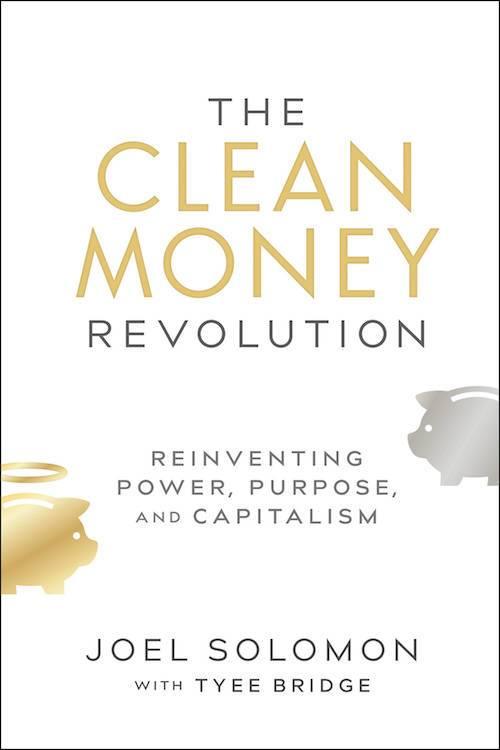How a Solid CSR Program Could Save the Ivanka Trump Brand


First daughter Ivanka Trump's eponymous fashion brand has had a rough week. First came word that the brand's manufacturer is re-labeling her clothing and funneling it off to a discount retailer. Then, news broke that the same manufacturer has a record of underpaying its factory floor employees, with a grinding 57-hour work week among other violations of United Nations labor standards.
That's a bad look, especially because the face of the company is a self-styled champion for working women.
Standard crisis management calls for the Ivanka brand to admit the mistakes and position them as isolated incidents. That's not an easy task for a company that is already burdened with ethical questions.
So, what comes next?
When is a brand not a brand?
The first issue erupted into the public sphere when Business of Fashion reported that the Ivanka Trump clothing has been selling at the discount retail chain Stein Mart under the Adrienne Vittadini Studio label.
Label-switching is legal, as BoF reports, yet the practice has been fairly commonplace in the past. But it has fallen out of favor in recent years as retailers and manufacturers find other options to sell discounted items. The growth of the political boycott movement has also motivated consumers to dig behind labels for more information about their purchases.
Business of Fashion obtained a statement from G-III, "the company that licenses Ivanka Trump ready-to-wear," emphasizing that the company acted without the knowledge or consent of the Ivanka brand. The G-III statement further defended the Ivanka brand while deflecting blame from itself, by characterizing the clothing as "mistakenly labeled" rather than a purposeful attempt to deceive consumers.
That should have put an end to the issue, but G-III took an additional step, claiming the "Ivanka Trump brand continues to grow and remains very strong.”
That gave BoF an opening to explore whether or not the switch really was accidental. Reporter Lauren Sherman makes the case that a consumer boycott could be the root cause:
"Since the election of her father Donald J. Trump to the office of U.S. president, Ivanka Trump-branded merchandise has been dropped from several prominent American retailers, most notably Nordstrom — which cited weak sales — as well as Neiman Marcus and Shoebuy.com. According to a source within Stein Mart, the retailer has received negative feedback from customers regarding Ivanka Trump product, with one customer spitting on a blouse in front of a cashier before storming out of a store."
Despite G-III's disavowals, the label-switching incident adds more ammunition to the boycott campaign against the Ivanka brand by networks such as #GrabYourWallet.
Do read the article for full details (here's that link again). In another odd wrinkle, as of this writing the Adrienne Vittadini brand has not confirmed whether or not it was aware of the switch.
Ivanka Trump talks up working women, but...
The second newsworthy issue of the week surfaced in a Washington Post article about factory conditions at G-III. The timing of the article is interesting because it describes an audit that took place all the way back in October, in the run-up to Election Day. The inspection was conducted by the third-party group SMT-Global.
Here's the takeaway from the Post:
"Workers at the G-III factory in China were required to work 57 hours a week “on a regular basis” to hit production targets, inspectors found. Though Chinese law sets the limit for overtime at 36 hours per month, workers in all of the factory’s departments exceeded that limit, working up to 82 hours of overtime a month between September 2015 and August 2016."The factory’s workers made between 1,879 and 2,088 yuan a month, or roughly $255 to $283, which would be below minimum wage in some parts of China."
The Post lists two dozen violations in all, including workplace safety issues and failure to cover more than two-thirds of the workers under a benefit program mandated by the Chinese government. It also appears that the factory provided only a few workers with the number of days off to which they were entitled. Most received five days off yearly.
The news came at a particularly bad time for Ivanka Trump -- the person, not the brand. It undercuts the women's empowerment theme of her new book, which was just published under the title "Women Who Work: Rewriting the Rules of Success."
"Women Who Work" met with a media backlash that raised conflict-of-interest issues in consideration of Trump's official capacity in the administration of her father, President Donald Trump.
In an attempt to defuse the issue, last week Ivanka Trump cancelled a planned promotional tour and pledged to donate all proceeds from the book to charity.
That crisis was beginning to fade from the media spotlight, but Drew Harwell of the Post focused new attention on the disconnect between Trump's social messaging as first daughter and her practices as a businesswoman.
Making the situation even worse, on April 25 Ivanka Trump participated in the W20 Forum in Berlin to showcase her views on women's issues, only to receive a chorus of boos and hisses from the audience when she defended her father's record.
Trump vs. Trump
Speaking of President Trump, all of this bad publicity comes at a bad time for him as well. The president has his staff working overtime on pitching his first 100 days in office as productive in terms of fulfilling his campaign promises.
Though Trump now characterizes the first 100 days as an arbitrary media exercise, he made that time period a feature of his presidential campaign.
During the campaign season Trump assembled a long list of pledges in the form of Donald Trump's Contract with the American Voter." The so-named contract details Trump's "100-day action plan" that begins on the first day of his term in office. (If the campaign website is no longer available, you can find the contract in the Google Wayback Machine archives.)
Unfortunately, as the 100-day period draws to a close on Saturday, the pickings appear to be slim on the productivity side.
Meanwhile, the Michael Flynn scandal is heating up to the boiling point, pressure is rising for a thorough investigation of Russian influence on the Trump campaign, and a third executive order targeted at immigrants has just been swatted down by the courts. (The first two were iterations of the notorious "Muslim travel ban," and the third was an attempt to punish sanctuary cities.)
In addition, Trump's own staff has forced him to downgrade the role of top advisor Steve Bannon. Adding insult to injury, news reports indicate that Bannon has been less than forthcoming about his success in the private sector prior to joining the White House staff.
The last thing that President Trump needs is another headache, but the spotlight on his daughter has intensified at exactly the wrong time.
In addition to the new controversies this week, the brand's overseas licensing deals and patents have also raised ongoing conflict-of-interest concerns. And the Ivanka brand's continued reliance on overseas manufacturing may pull the rug out from under President Trump's much-publicized "Buy American" message.
The CSR redemption: The wrong way
The Ivanka Trump brand is facing some choppy seas, pushed along by boycott campaigns like #GrabYourWallet and Sleeping Giants. It could be in for the same kind of perfect storm of negative publicity that forced Fox News to boot its popular pundit Bill O'Reilly off the air.
It seems that Ivanka Trump (the person) has recognized the danger.
In an apparent attempt to build her credibility -- and consequently reflect some positive news on the president -- on April 26 Ivanka Trump told an Associated Press reporter that she would help launch an economic development fund for women under the umbrella of the World Bank.
"Ivanka Trump told me yesterday from Berlin that she has begun building a massive fund that will benefit female entrepreneurs around the globe," wrote Michael Sohn of the AP. "Both countries and companies will contribute to create a pool of capital to economically empower women."
Unfortunately for both of the Trumps, her description of the initiative has raised a whole new round of ethics questions involving the use of White House authority -- or arm twisting, as the case may be -- to solicit private funds for the endeavor.
That may all be sorted out eventually, but the damage has already been done. Investors who would like to establish good relations with the White House have been put on notice that they can show their goodwill by contributing to the new fund.
CSR the right way
Ivanka Trump (the person) would be better served by putting her brand on a conventional CSR track. It takes years of hard work, but setting goals and seeing them through have provided top companies like Levi-Strauss and Starbucks with the trust and credibility needed to weather bad publicity.
There is no need to re-invent the wheel. The CSR movement has been gathering steam since the early 2000s, and there are plenty of best-practice models and other instructive resources at hand.
The Ivanka brand could start by looking at a model very close at hand -- right in the White House, in fact.
Her father's reported affection for Coke is drawing new attention to the Coca-Cola Co., which is deeply involved in the CSR movement.
Though critics raise important issues with the company's purveyance of sugary drinks, it has a growing CSR track record that includes everything from a newly expanded paid family leave policy to bio-based bottles. Coca-Cola's CSR program also follows science-based principles for reducing greenhouse gas emissions, and its water conservation initiatives have set a high bar.
On the other hand, in keeping with the spirit of CSR, Coca-Cola was among several companies that used the Super Bowl platform to push back against President-to-be Trump's campaign rhetoric. And it was one of the first companies to come out swinging against Trump's first "Muslim ban" executive order.
If not Coca-Cola, then Ivanka Trump (the person) has plenty of other examples at hand.
Image credit: Disney | ABC Television Group via Flickr
Corporate Social Responsibility Communication in the Digital Era


By Mark Anthony Camilleri
The digital age has paved way for a dynamic era of corporate communication. Everything from blogs and RSS feeds to webinars and social media give organizations new tools with which to interact directly with their stakeholders. Such interactive communications are often referred to as viral, because ideas and opinions spread through the network via word‐of‐mouth and are usually perceived as highly trustworthy sources.
When organizations interact with their online networks, they may find their stakeholders share their passion for laudable causes. Very often, there is a business case for corporate social responsibility -- and communicating your CSR vision online is just one more way to help your company stand out, reach out and engage.
Online communication has potential to create a ripple effect that grows as it reaches wider audiences. And social media empowers users to engage with organizations on a myriad of issues. So why not CSR?
Your digital communication toolkit
Due to its apparent lack of gatekeeping and its symmetric two-way communication, digital media is suitable for undertaking a corporate-public dialogue. But open platforms like social media can also increase the complexities of the debates as they decrease the level of institutionalization of the interactions between organizations and their stakeholders. In other words: Conversations can grow quickly once they reach open platforms like Twitter and Facebook, but your organization forfeits some ability to moderate or control them.
As such, social media has transformed the communicative dynamics within and between corporations and their external environment. These online networks are effective monitoring tools as they could feature early warning signals of trending topics. And, in the case of CSR communications, they can help business communicators and marketers to identify and follow the latest sustainability issues.
Harnessing the power of social media and digital presence can also help your organization's CSR influencers gain prestige as expert voices. Mastering the use of popular hashtags -- from the basics like #CSR and #sustainability to niche topics like #SharedValue -- allow your influencers to interact directly with stakeholders on their topics of expertise. And custom hashtags for your company's events or marketing promotions can quickly catch fire and generate far more publicity than more traditional forms of advertising. Charities, philanthropic organizations and NGOs can also harness the power of the hashtag to help their campaigns go viral.
But your digital CSR communications can't begin and end with social media.
Modern tools like Scrivener make it easy to write and compile for formats including .mobi (Kindles) and .epub (iBooks).
Guest blogging on respected industry websites is a great way to build reputation and authority, but also appropriate backlinks are crucial for strong search engine optimization. Moreover, regular contributions on blogs allow your influencers to connect with users they may not otherwise reach; by sharing ideas and opinions, they can spread awareness on your organization's CSR mission or promoted content.
After scattering the breadcrumbs of engagement across the Web, smart digital communicators will follow up with tracking and analytics tools to see which form of content had the biggest impact on their organization's target audience. Businesses can make use of project management systems like Asana or Trello, or intranet tools like Interact or Podio, to track the effectiveness of their outreach campaigns.
Crafting a social media presence that fits your goals
But the most ubiquitous form of digital communication is clearly social media, with an estimated 2.51 billion social media users worldwide in 2017. So regardless of what your tracking reveals, social media will surely play a role in your CSR communications vision. But the social media platform that's best for another organization may not work for you, and your tracking can help you decide where to place your energy.
Yes, the most popular platforms such as Facebook, Twitter and Snapchat will play a role. As will Google Plus, which is used frequently in Europe but has yet to fully catch on the U.S. LinkedIn is yet another effective tool, particularly for personal branding on the part of your influencers. But companies can also use LinkedIn to create or join their favorite groups, and share updates on their CSR activities with like-minded academics and CSR practitioners.
Depending on your goals, you may forgo the image-focused platforms of Pinterest and Instagram, but they may still be relevant in the context of the sustainability agenda. For instance, businesses can illustrate their CSR communication to stakeholders through visual and graphic content -- which tends to be more shareable.
YouTube and Vimeo have positioned themselves as important social media channels for many consumers, particularly among millennials. These platforms give digital communicators a way to humanize or animate CSR communication through video content. And they can do double-duty. For instance, webinars and videos featuring university resources may also comprise lectures, documentaries and case studies that can then be shared online through the likes of Skillshare or Udemy.
The bottom line
The Internet and social media are shifting the power dynamics and opening new debates between business and society. Open platforms provide access to multiple stakeholders and facilitate two-way communication between participants. They increase the speed in communications as there are no gatekeeping mechanisms. Open platforms are therefore unique spaces in the emerging diversity and plurality of the sustainability agenda.
Participants in social media can no longer be classified as formal, functional or institutionalized stakeholders (e.g., as customers or NGOs). Yet, they may be categorized in relation to their changing affinities with the specific issues under discussion.
In conclusion, despite the promise that digital media has to improve the efficiency and effectiveness of corporate communication between organizations and the public, business implementation of online engagement is neither automatic nor easy.
The dialogic features that are enabled by blogs, social media and other digital tools may not necessarily result in improved stakeholder relationships. And businesses may inevitably have to deal with legitimacy constraints as they manage online engagements in different contexts.
At the same time, there are stakeholders -- particularly customers -- who are increasingly becoming more discerning about the digital media they consume. This allows genuine, well-crafted CSR communication to stand out, but it also means the typical corporate-speak may be quickly left behind.
Image credit: Pixabay
Dr Mark Anthony Camilleri is a resident academic lecturer in the Department of Corporate Communication at the University of Malta. He lectures in an international masters programme run by the University of Malta in collaboration with King’s College, University of London. Mark specialises in strategic management, marketing, research and evaluation. He successfully finalised his PhD (Management) in three years time at the University of Edinburgh in Scotland - where he was also nominated for his "Excellence in Teaching”. During the past years, Mark taught business subjects at under-graduate, vocational and post-graduate levels in Hong Kong, Malta and the UK.
Part of this article has appeared in Camilleri, M.A. (2017) Corporate Sustainability, Social Responsibility and Environmental Management: An Introduction to Theory and Practice with Case Studies. Springer International. http://www.springer.com/us/book/9783319468488
AB InBev sets goal of 100% renewable energy


Microgrants Make Big Impacts for Local Communities


When the Christopher Reeve Foundation was considering how to increase support for caregivers who provide home care for paralysis patients, it came up with an unusual idea: Why not create a grant-making program for healthcare organizations so they can offer their specialized support to family members who need to take time off?
The foundation knew that burnout is a frequent challenge for caregivers, especially those faced with caring for individuals with paralysis. It also knew there was a dearth of government funding for such support, and private respite care is expensive.
So the foundation launched its Respite Care Grant Program last month to help organizations with an interest in providing fill-in care for family caregivers. The grant program will help fund respite care for at-home caregivers, while providing income for home care agencies that serve as the professional backbone to home care.
While the Christopher Reeve Foundation’s new grant program sounds unique (and it is), its altruistic goals aren’t. Philanthropy has been around almost as long as humans have, serving an often indispensable role in ensuring community resiliency.
Plato, in the 5th century B.C., directed his nephew to sell off his farm after he died so the money could be used to support students and faculty at the school he founded.
Roxelana, the wife of the Sultan Suleiman the Magnificent, used a charitable trust to give support for widows and orphans in Jerusalem during the 16th century.
The ethos of philanthropy cuts across all cultures and religions. And its value can be found in the literature and founding principles of all major religions, including Hinduism, Judaism, Christianity, Islam and Buddhism.
Here in North America, the concept of providing grants for community improvement has been an integral part of sustainable growth in big and small neighborhoods. The JM Kaplan Foundation, for example, has funded support for human rights, environmental conservation, civil liberties and the arts. And for the smaller but equally important endeavors of the First Nations Development Institute, philanthropy has served as an essential tool to bettering America’s cities, rural districts and families.
But each one of these unique organizations has, at one time or another, faced the same challenging questions: What is the best way to create a funding program that will benefit my target community? How do I determine whom to fund? And how do I build longevity into my program?
Grant-making: A community endeavor
How you approach that first question will help ensure your grant program stays strong and successful, said Aaron Dorfman, CEO and president of the National Committee for Responsive Philanthropy.
Determining your priorities before you decide whom to fund is critical to being an effective grant-maker.
“We too often see people or organizations with good intentions, who say ‘we just want to help everyone in our community!’ Well, the fact of the matter is: That is usually not possible,” Dorfman said bluntly.
“Most grant-makers have very limited budgets in comparison to the issues and challenges they are seeking to address. And so, in trying to help everyone in the community, often philanthropy will end up doing very little good for anyone. So it is a far better strategy to be intentional about which communities you are seeking to help.”
The First Nations Institute, for example, developed its Nourish Native Children, Feeding Our Future grant program in order to help Native American communities expand their child nutrition programs. The funding targets children ages 6 to 14 living in Native American communities.
The specificity of the grant program not only makes it easier for grantees to understand the qualifications they need in order to apply (i.e., an existing nutrition program for Native American children), but it also tells donors that the grant-making organization already has a fact-based plan for improving the economic conditions in certain communities.
Dorfman also said it is important for potential grant-making organizations to think carefully about the kinds of benefits they want to bring to their communities.
“We also see too little philanthropic support in general that is intentionally seeking to benefit the most vulnerable and marginalized communities: low-income communities, communities of color, women and girls, [and the] LBGT community,” Dorfman explained.
Don't be afraid to take chances
Ensuring that your grant program will be helpful and useful within your community is also important, advised Dorfman, who said grant-makers are often afraid to step out of their comfort zones and consider projects that may seem bold or even controversial.
“I think a mistake grant-makers make is that they don’t take enough risk,” Dorfman told us. "If a few of the grants you are making don’t make you just a little bit nervous about ‘I don’t know if this is going to work out,’ then you aren’t taking enough risk. If you are only making safe bets, you aren’t going to make transformative change in your community.”
The collaborative arts organization South by Southwest, based in Texas, is known for its unconventional grant projects. This year’s SXSW community grant winners include a mobile child-minding unit for kids whose moms work in film and a project that uses music and camaraderie to help veterans talk and heal from their wartime experiences.
“You want to have some of those kinds of groups in your portfolio along with safer, more traditional groups,” Dorfman advised.
Designing a grant application process to match and reflect its financial benefits is also important, he explained, adding that there is a risk with making the application process too burdensome, especially for smaller grants. Applications should reflect the award that is being offered. Subjecting your grantees to hours of work to apply for a small award can send the message that you aren’t really in touch with the needs of the communities you are soliciting.
Multi-year grants or single-year?
Many applicants have recurrent funding needs. A nonprofit theater program, for example, will probably be looking for funding next year as well if it’s expecting to continue to grow. Offering multi-year grants rather than single-term funding allows the applicant to look ahead and plan for the future. That look-ahead approach assures a better use of your investment in their project.
“The evidence is clear that long-term support that is unrestricted does the most to contribute to impact and effectiveness of nonprofit grantee organizations. And far too few philanthropies provide that kind of funding,” Dorfman told us.
He said a lot of corporate grant-makers think that by offering single-year grants (with or without an option to reapply), they are making their funds available to more eligible applicants. The truth is that single-term funding can make it harder and more expensive for startups to survive.
Build a sustainable program starting at the top
For companies and foundations, building a resilient grant program -- like many business initiatives -- often starts with the top leadership of an organization. Dorfman said it is critical to the longevity and success of a grant program that the organization’s leadership is fully behind the effort and has “buy-in” to its continued success.
“Make sure there is deep commitment to a grant-making program from the top executive of the corporation, that they understand how this is not just ‘a nice thing to do,’ but this is in fact essential to the values and the DNA of who the company is and what it stands for in the world.”
Dorfman said organizations that see the grant funding program as integral to their corporate culture and identity have a better success at maintaining a strong, resilient program that meets its goals and contributes to its community
And it’s also important to remember that a grantor’s responsibility doesn’t end when the money is awarded. Encouraging a good rapport with your grantees can have a lasting impact on your program’s longevity and success as well as theirs. Keeping an open door and being willing to dialogue with grantees demonstrates that the relationship doesn’t end with a check; you are invested in and want to be part of their community endeavor. It’s all part of “being a good grant partner,” Dorfman said simply.
Grant programs have a plethora of online resources at their fingertips these days. The NCRP publishes a list of what it considers to be the top criteria for potential grantors to consider, along with periodic studies and findings about best grant-funding practices.
Peak Grantmaking (formerly Grant Managers Network) also helps with the nuts and bolts of setting up and running a grant program. Project Streamline (part of Peak Grantmaking) helps grant providers simplify and direct their strategy and processes. And for those looking for tips on how to create small community grant programs, Exponent Philanthropy is a wealth of information.
Dorfman’s final advice: “Keep it simple." Grant funding is a learning process like everything else. “Start funding some really good things, and learn as you go and as you grow your philanthropy.”
Flickr images - Lance Cheung/USDA; George Dutton/USACE
Apple's Ambitious Recycled Materials Goal


Electronic waste, commonly called e-waste, is a big problem. Over 20 million tons of e-waste are produced annually around, 3.4 million tons of which hail from the U.S. According to iFixit, e-waste in the U.S. alone would weigh more than the combined weight of every living blue whale.
As global use of electronics increases, the volume of e-waste naturally rises with it. But one major American tech company wants to do something to cut this growing waste stream down to size.
Last week, Apple announced a commitment to use 100 percent recycled materials to make its products. That makes it the first major IT firm to adopt such a commitment, which appeared in the company's 2017 Environmental Responsibility report.
Greenpeace released a response to the news of Apple’s commitment. Greenpeace Senior IT Analyst Gary Cook called it “ambitious” and said it highlights “the need for greater urgency across the sector to reduce resource consumption and e-waste that are causing significant impacts on the environment and human health.” As Apple transitions to non-virgin raw materials, the demand for mined materials will decrease and the recycling rates of electronics will increase, Cook said.
Apple’s announcement will push other companies in the same direction. Cook noted that the company’s pledge comes less than a month after Samsung announced plans to refurbish and recycle the 4.3 million Galaxy Note 7s it recalled last year. Samsung wants to “rebuild customers' trust following the Note 7 incident,” Cook said, and doesn’t want to be lagging behind Apple.
Lisa Jackson, former head of the EPA who now serves as Apple's VP of environment, policy and social initiatives, told Vice News the tech giant is “actually doing something we rarely do, which is announce a goal before we’ve completely figured out how to do it.”
It is a commitment that will require great innovation on Apple’s part. The majority of electronics today are just not designed with the end of the product’s life in mind, as several advocacy groups including the Electronics Take-Back Coalition are quick to note. Manufacturing the product is the focus of companies, and how the product will be dealt with when it’s discarded is not a priority. Companies are simply not thinking about how their products will be recycled.
The materials chosen for electronics are often difficult to recycle, says the Electronics Take-Back Coalition, and electronics are often difficult to disassemble for recycling -- both of which could present problems for Apple.
The company's latest move represents a radical departure from its past practices. A recent investigation by Motherboard revealed that Apple forces its parter recyclers to destroy iPhones and MacBooks by shredding them, rather than opting for reuse or repair.
Motherboard discovered Apple’s practices through documents obtained via Freedom of Information requests. In a 2013 document, John Yeider, Apple’s recycling program manager wrote: “All hard drives are shredded in confetti-sized pieces. The pieces are then sorted into commodities grade materials. After sorting, the materials are sold and used for production stock in new products. No reuse. No parts harvesting. No resale.”
In order for Apple to achieve its commitment to using 100 percent recycled materials, it will need to create a closed-loop supply chain -- a goal the company says it's working toward.
Supply chains are traditionally linear. For electronics, that means materials are “mined, manufactured as products, and often end up in landfills after use,” Apple pointed out in its latest Environmental Responsibility report. In a closed-loop supply chain, products are made using only recycled materials or renewable resources. But it's still too early to tell how this might take shape for Apple.
And there’s something else the tech firm wants to achieve that’s equally ambitious: It wants to eventually ends its reliance on mining.
Many of the materials that make up electronics like smartphones and tablets must be mined -- and human rights groups can link some electronics firms to labor abuses through their mining supply chains. To begin to free itself from mining, Apple is encouraging customers to recycle their old devices through Apple Renew, from which it will source recycled materials. It is also piloting new recycling techniques such as a line of disassembly robots it calls Liam.
Apple acknowledges that its goals are ambitious and “will require many years of collaboration across multiple Apple teams, our suppliers, and specialty recyclers.” But if any company can achieve such ambitious goals, it is likely to be the one that has the ghost of Steve Jobs on its side. This is the company that brought us smartphones and tablets. And it may very well be the one that revolutionizes recycling them.
Image credit: Flickr/Informed Mag
Gap Will Source 100 Percent Sustainable Cotton By 2021


Gap, Inc. recently announced that it will source 100 percent of its cotton from sustainable sources by 2021 for some of its clothing. The company, which generated almost $16 billion during its last fiscal year, says it is aiming this goal is specifically for its clothes sold under its flagship Gap brand.
Critical for that procurement goal is the sourcing of more better cotton, as certified specifically by the Better Cotton Initiative (BCI).
Gap claims to have already sourced 11.5 million pounds of better cotton since 2016, which it says is enough to manufacture 7.4 million pairs of jeans. When asked what percentage of its current cotton supply is comprised of better cotton, Gap replied that it does not publicly reveal those numbers. In fairness, Gap faces a problem many fashion brands confront: They do not own their means of production and have little control over their suppliers.
In an interview with TriplePundit, Gap said that it is also agnostic about what types of “sustainable” cotton it will purchase over the next four years. While an increase in BCI-certified cotton is critical to the company’s mission, Gap claims it will also increase its purchase of organic, American-grown and recycled cotton.
“We consider our approach to be a portfolio approach,” said Melissa Fifield, senior director of sustainable innovation at Gap. “This goal will require additional innovation and further developments in current technologies.”
Gap’s directive on sustainable sourcing is similar to other garment companies that are trying to minimize their supply chains’ social and environmental impacts. For example, last year Timberland pledged to source all of its cotton from either BCI growers, organic cotton farms or American cotton farms by 2020. H&M has established similar goals. Other firms, such as Marks & Spencer, have yet to commit to a 100 percent figure – M&S has established a 70 percent goal for 2020.
BCI-certified cotton has become the leading sustainable sourcing standard for the global apparel industry. And BCI says its membership, as well as the volume of cotton its farmers produce, continues to increase.
The procurement of more BCI-certified cotton is not a problem for Gap, Fifield told us, but she said the company does not want to put all of its eggs in one basket.
Other apparel companies, such as Adidas, have disclosed specific goals for BCI cotton in the past – and have been quick to announce the results if they surpass those metrics. Gap, however, will not commit to a specific amount of sustainable cotton from any one source.
What's important about Gap's commitment, however, is that it sends a signal to companies throughout the entire garment industry's supply chain. If Gap and its competitors are serious about boosting their purchase of sustainable cotton, everyone from the farmer to the textile mill know that a market for these fibers will develop -- and, over the next few years, the costs of the materials will continue to decline.
One could say that Gap is pursuing an all-of-the-above approach, as the company does not have much time to revamp its supply chain in order to stock its approximate 3,700 retail locations worldwide, 2,400 of which are located in the U.S. When asked about textile innovation, and whether Gap is conducting research internally or would work with smaller companies, Fifield said: “All of the above. When I think of 'innovation,’ it relates to the internal team that I leave, new partnerships and new relationships with potential suppliers.”
Could cotton recycling help Gap meet its goals? While more clothing companies, such as M&S, Levi’s and H&M, are incentivizing their customers to recycle unwanted clothing items, evidence suggests that the vast majority of textiles still end up in landfills. And with the surging popularity of fast-fashion retailers, that volume of materials only keeps increasing.
And although Fifield said Gap will not commit to a specific amount of recycled fibers, the San Francisco-based company is hearing the messages from stakeholders loud and clear. “The recycling of fibers is a challenge, but it’s still important for us to put a stake in the ground,” she said. “And we are determined to be even more ambitious as we’d like to see more cotton recycling happen.”
For Gap, more responsible cotton is not just about checking a box in meeting its sustainability goals, which also include water conservation, women’s empowerment, and a reduction in energy consumption and waste. The company also has to keep customers happy. Increased competition, not to mention the growing popularity of online shopping, imposes plenty of pressure on Gap, which has endured more than its fair share of ups and downs during its half-century of history.
Creating products made of recycled or more sustainable cotton will not do the company much good if customers are not thrilled with product quality – and the farmers growing this cotton will not benefit in the long term, either.
“Much of this is related to things we’re hearing from our customers, as in how they want these garments to perform for them,” Fifield told us. “And bottom line, we view this innovation as, how do we solve the problems of our customers, and how do we ensure that we are delivering products not only better for the planet, but also, for those who are buying our clothes?”
Image credit: Mike Mozart/Flickr
Adidas Walks Ocean Plastic Into New Shoe Lines


The German athletic gear giant Adidas is a long-running a leader in sustainable clothing, and is taking a closer look at how it can manufacture its popular sneakers more responsibly.
The result is a partnership with the Parley for the Oceans initiative, which brings stakeholders together to raise awareness about the surging amount of plastic that is accumulating in the world’s oceans.
Adidas says its work with Parley rests on a three-point strategy: avoid the use of virgin plastic, gather plastic waste from the environment when possible, and redesign footwear and apparel so that it is both sustainable and performs better.
In a pilot last year, the company made 7,000 pairs of athletic shoes from ocean plastic accumulated near the Maldives, reports Business Insider. Those sold for $220 a pair. Adidas judged the effort a success, and says it now has bigger plans for the latest iteration of its fashion-forward line of upcycled Ultraboost shoes.
Earlier this spring, Adidas, Parley and fashion designer Stella McCartney released a white athletic shoe with an upper made from this recycled plastic. And the company told the United Kingdom daily The Independent it plans to manufacture 1 million pairs of Ultraboost shoes made from repurposed ocean plastic this year.
Each pair of Ultraboost shoes are comprised of an average of 11 plastic bottles salvaged from the oceans, say Parley and Adidas. Recycled PET plastic is used in the laces, heel webbing and lining, as well as the sock liners.
And Adidas, always in fierce competition with companies such as Nike and Puma, insists this is not a token effort to raise awareness about pollution or to boost the firm’s sustainability chops. The company says its recycled plastic shoes are lightweight – and are designed to withstand the demands of athletics while providing the necessary cushioning needed for joints, arches and the Achilles heel.
The convenience of plastic and society’s affinity for disposable products have caused mounting plastic waste, which is both overwhelming and depressing, and the problem shows little sign of slowing down. On the flip side, the crisis has brought organizations together to find ways to stop the onslaught of garbage ending up in the oceans -- and new ideas for technical solutions are always emerging.
The challenge, however, is scale: Suggestions such as turning recovered ocean plastic into fuel, or even construction materials, are certainly creative approaches. But so far they have not been able to tackle the challenge of cost effectiveness.
The work of Parley and Adidas, however, is compelling on two fronts: These sneakers not only upcycle plastic that otherwise would contaminate beaches and kill marine life, but they also support a campaign that can nudge consumers to think twice before grabbing that plastic item.
Image credit: Parley for the Oceans
Philadelphia Startup Will Collect Leftover Food During NFL Draft


The 2017 National Football League (NFL) draft is happening in Philadelphia this weekend, from April 27 to 29. And a local organization will help recover surplus food so it can be donated to area shelters.
Food Connect is the Philadelphia-based organization behind an app that makes donating surplus food to local shelters as easy as a few clicks. The organization is partnering with the NFL during the draft, where an estimated 10,000 pounds of food will be collected from vendors, events and local restaurants. That still edible food otherwise bound for the landfill will be donated to area food banks, pantries and soup kitchens.
Food Connect took part in Operation Food Rescue during the Democratic National Convention, which brought about 50,000 visitors to Philadelphia. The initiative mobilized the city’s leading anti-hunger organizations that collect surplus food from large events and provide them to local shelters. During the eight days before and during the DNC, Food Connect collected 11,239 pounds of food, or about 9,366 meals, and other organizations recovered thousands more.
One in five people in the Philly area face hunger, and nearly a third of the city’s households are enrolled in the Supplemental Nutrition Assistance Program (food stamps). In heartbreaking contrast, about 20 percent of Philadelphia's edible food ends up in the garbage each day, according to Food Connect.
Over 326,000 people, almost 22 percent of the Philadelphia population, lack access to enough food for a healthy and active lifestyle. That is almost twice the American average. But Food Connect says it has a way to improve food security in the city and make a dent in the problem. It allows people to schedule a pickup of surplus food at their organization through an iOS or Android app. The donated food is typically consumed the same day or the following day.
Philadelphia is home to about 700 food pantries and soup kitchens, and almost 90 percent of them run out of food or are forced to provide less food at certain times during the year. And all of this while edible food is sent to local landfills.
Food waste in general is a gigantic problem in the U.S., where an estimated 30 to 40 percent of the food supply ends up trashed. That amounted to about 133 billion pounds and $161 billion worth of food in 2010 alone, according to the U.S. Department of Agriculture (USDA).
A 2012 report from the Natural Resources Defense Council pegged food waste in America at the higher end of the spectrum -- concluding Americans waste around 40 percent of their food supply. If that's true, it equates to 20 pounds of food wasted per person, per month. As food continues to find its way into local landfills, an estimated 1 in 6 Americans are food insecure.
The American sports industry is catching on to the glaring fact that surplus food from massive events such as the NFL draft must be collected and donated to local organizations that serve the hungry.
This year's Super Bowl serves as a good example: About a dozen local organizations collected surplus food from NRG Stadium in Houston, thanks to efforts coordinated by the Houston Food Bank. The Super Bowl is not the only example of sporting events where surplus food was recovered: Petco Park, home of the San Diego Padres, improved their food waste diversion from 60 tons in 2005 to 164 tons in 2011, according to the U.S. Environmental Protection Agency. And teams and stadiums across the country are collaborating with one another on ways to reduce and recapture food waste.
Surplus food that is still edible can and should be collected from sporting events. Doing so provides environmental benefits while providing food for local shelters. It's a win-win for people and the planet.
Image credit: Food Connect
Ignore the Marketing - Just Skip the Juice


Over the years, food and beverage companies have aggressively marketed foods in the name of public health. Many of them, of course, certainly taste good; breakfast cereal is one example. But the adage that having breakfast is a must is backed up more by marketing from the likes of Kellogg and General Mills than peer-reviewed science.
Take this marketing example from Tropicana.com: "Taste and nutrition are brought together in every single bottle of Tropicana juice. With fruits, vegetables and passion in every glass, it has everything you need to brighten your day!"
But with a national obesity rate that refuses to budge, it is becoming clear that the extra calories from juice far outweigh the vitamins and other health benefits it provides to consumers.
Three professors of medicine addressed this discrepancy in a recent op-ed in the Washington Post. They made it clear that juice is a treat, and there is no problem serving it occasionally. The problem is the stubborn belief that juice -- whether it comes from oranges, apples or kale -- is just as healthy as fresh fruits and vegetables.
Citing the amount of calories in a glass of orange juice compared to a full piece of fruit, Heather Ferris, Elvira Isganaitis and Florence Brown made the case that our perception of juice needs a “radical makeover.”
The Post op-ed struck a personal chord, as a family history of diabetes chases me rapidly like that fast-approaching car in the rearview mirror. A decade ago, my glucose levels were high, so off I went to see a nutritionist. She urged me to keep a food diary. A while later, I showed up at her office to show what I had consumed over the previous weeks. Among the several no-nos, she was not happy with my regular consumption of carrot juice from Trader Joe’s.
“But it’s carrots; it’s vitamin A!” I protested, looking at her like she was an idiot. She stared back, justifiably, as if I were the bigger idiot. I made some adjustments, but recently my doctor sat me down after some tests and summed up the news: I was borderline diabetic. We decided I would start a near-ketogenic diet, limit my net carbohydrate intake to 50 to 100 grams daily (minus fiber), and spurn sugar in all forms.
So I began to plan menus the way more athletes do these days, but it's counter-intuitive to how U.S. government guidelines advise us to eat. Three months later, a diet that includes almost 60 percent calories from fat helped me lose 18 pounds (over 8 kilos). In the meantime, I have said good-bye to sugars, grains, bread, pasta, alcohol and definitely juice -- pomegranate, acai or otherwise. (This is not meant to be health advice: Talk to a doctor or nutritionist before making a drastic change to your diet.)
As Ferris, Isganaitis and Brown pointed out, the popularity of juice bars and juice machines -- everywhere from coffee shops to Whole Foods -- has made juice trendy (and more expensive), but at a growing risk to public health.
A bunch of kale may top off at 100 calories and come with copious amounts of vitamins, fiber and minerals. But many of us blanch at the thought of kale, so we think we’re doing our body a favor by imbibing it in a smoothie with oranges, bananas and lord knows what kind of processed protein powder. That bunch of kale will now cost you at least 600 calories – without most of the fiber, antioxidants, phytonutrients and even basic nutrients that were stripped out while that kale was pulverized. The upshot is: If kale just does not work for you, stick to a green with a milder taste instead of drinking with a side of sugar.
The truth is that the history of juice, like breakfast cereal, is one based in marketing and even “innovation” -- not from the need to create a healthful food product. Almost a century ago, the owners of Florida orange groves needed to figure out what to do with all that surplus fruit, and the canned juice industry was born -- and it thrived for decades.
Eventually the U.S. Department of Agriculture (USDA) incorporated juice into its nutritional guidelines; those suggestions were recently adjusted, but a glass of juice is still considered the same thing as a piece of whole fruit, even though any responsible doctor or nutritionist would tell you otherwise. Meanwhile, federal assistance programs such as WIC (Women, Children and Infants Supplemental Food Program) are giving food companies a free pass. WIC guidelines, for example, permit recipients to purchase up to two gallons of juice a month – money that could be better spent on whole fruits and vegetables.
So what’s the solution? These medical professionals suggest ditching the juice bars -- and definitely the juice boxes. Instead, choose water, milk or a milk alternative, especially for children. As is the case with our favorite forms of poison -- whether they be ice cream, booze, chocolate or a sugary latte -- juice should be consumed in limited portions, not as something regularly served with a meal. And adults should consume no more than four to six fluid ounces a day.
The Institutes of Medicine recently issued recommendations to the WIC program, which include a far smaller monthly juice allowance. The big food companies will not go for this policy shift, but considering the link between fruit juice consumption and increased obesity risks, the time has come for policymakers to do the right thing for public health.
Image credit: Derrick Brutel/Flickr
Reinventing Capitalism with Joel Solomon's 'Clean Money Revolution'


By Joel Solomon
These times call for courageous new thinking. Money is perhaps our biggest blind spot. We look at it very myopically. We ignore noticing what it is doing on behalf of us. We let it do things we would never see ourselves doing.
We must find new eyes to examine our personal connections to atrocity, devastation, and torment, for people and places. Our name is on our money.
How will we take responsibility for its actions on our behalf, for our legacy to future generations?
The following is an excerpt from "The Clean Money Revolution: Reinventing Power, Purpose, and Capitalism" by Joel Solomon with Tyee Bridge, April 3, 2017, New Society Publishers.

We are on the cusp of an economic revolution.
This upheaval will remake all the systems we depend upon. In the coming decades it will transform energy, food production, buildings, transportation, infrastructure, and finance. Among other things, it may be the biggest opportunity to make money in human history.
Imagine our world three generations from now: The world of your great-grandchildren. The seeds planted in cities like Vancouver have taken root and proliferated. Industrial activity works to decarbonize the atmosphere and stabilize the climate. The oceans have been cleaned of the horrific plastic gyres now poisoning them. Farming mimics, restores, and enhances natural ecosystems. Renewable energy, smart transit, and “living buildings” are the norm. Population has stabilized at a sustainable level.
We have an economy that serves both people and planet, with everyone’s basic needs being met and abundant opportunities for meaningful work. Goods are produced in a closed-loop production cycle and the concept of waste no longer exists. Nature heals itself as we take off the pressure. It is a world of true security, no longer deeply divided between haves and have-nots.
This is the potential of the clean money revolution that is starting to rumble through our economy.
If this imagined future sounds utopian or impossible, consider how much can happen in fifty years. What was life like for your grandparents? Could they even imagine the world as it exists today? Our descendants will inhabit a world vastly different than ours. The only question is whether it will be better or worse.
My bet is that it will be better. Two massive global forces are fueling that evolution. The first is the “green” conscious consumer trend I discussed in my preface. The second is the massive wealth transfer currently underway as affluent Boomers pass their wealth to Generation X and the millennials. Occurring over the next thirty years, it’s the largest such turnover in history.
As this wave of inherited capital meets the green megatrend, the possibilities for building a regenerative economy are dazzling and inspiring.
Waking up
Our spectacular human ingenuity gave us fire, agriculture, language, self-awareness, art, intellect, spiritual awe, nations, science, books, fossil fuels, extended lives, technology, and money. Likewise, our economic system has performed miracles for many. But our ingenuity and our economic successes have led us to a dead end.
We know we have deep and complex challenges to address. The list is long, depressing, and, to many of us, well known. Our most fundamental problem is that humanity has overreached the carrying capacity of nature. The results of overreach are all around us. Global warming, ocean acidification, widespread species extinction. Epic self-inflicted environmental damage like the BP Deepwater Horizon oil spill and the Fukushima Daiichi nuclear disaster. Dangerous externalities are too often legal, or even subsidized as part of “business as usual.” High-priced lobbying keeps tax revenues subsidizing damaging industries instead of incentivizing newer, cleaner technologies. Rather than rewarding “goods” like labor, we tax them, while allowing “bads” like pollution to happen free of charge and with impunity.
It’s a grotesque caricature of the ideal of capitalism, which is supposed to reward effort and innovation. One 2010 study by the London consultancy Trucost found that the top 3,000 corporations caused US$2.2 trillion in environmental and social damage in 2008 alone — all externalized onto the commons and untaxed.
This is madness.
We must begin to intelligently “degrowth” to reset the balance. Infinite growth is a fantasy. The Earth can no longer support our species in blindly expanding, dominating, and accumulating.
There are other profound challenges. Violence against women, human trafficking, and slavery remain rampant. Estimates say approximately 45 million people live as slaves worldwide as of 2016. Racism is resurgent in North America and Europe. These phenomena have been worsened by the sharp increase in poverty and inequity in recent decades.
From 2002 to 2010, the wealth of the world’s billionaires increased at the same rate as that of the poorest 50 percent of the population. In only five years between 2009 and 2014, the wealth of the bottom half of the global population declined — while that of the world’s billionaires doubled. Forty-eight percent of global wealth was in the hands of one percent of the population in 2014. Just 80 billionaires control the same wealth as 3.5 billion people: half the planet’s population.
For a North American perspective on inequity, the magazine Mother Jones summarized a recent Institute for Policy Studies report this way: “In 2014, Wall Street’s bonus pool was roughly double the combined earnings of all Americans working full-time jobs at minimum wage.”
Such gross inequity fuels distrust, resentment, and anger among citizens who have been left behind. They have reason to be upset. Manipulation by the powerful has steadily pushed the burden of taxation from the rich to the poor. Catastrophic market failures have further cost taxpayers trillions of dollars, and the playing field remains severely tilted in favor of the wealthiest individuals and the largest corporations. Demagogic politicians like Donald Trump use twisted rhetoric to rise on the building tide of anger. Mainstream leaders, meanwhile, fail to challenge the entrenched powers that write the rules for our financial and monetary systems.
This is a recipe for disaster, one we are currently watching unfold in politics and society. Much of our current mess can be traced to the world of finance. In three decades as an investor, entrepreneur, and change agent, I’ve more often seen money and business as the cause of problems rather than the solution. We can change that formula.
To date, money and finance have been managed under a mass-cultural state of dissociation. A gentle term would be sleepwalking; a more accurate one would be a mental disconnect, a kind of insanity. The mainstream mindset that money and investments are somehow value-neutral is the root of the problem. We give our money to managers, banks, retirement funds, insurance carriers, and others to invest in products and practices we would be horrified to claim as our own work. Our major institutions are complicit in this hypnosis of human spirit that is stealing the future.
Waking up from this state and reforming our economic system would be intelligent, functional, and offer a soft landing. Money can be a powerful driver of long-term resilience and a more just world. It’s our choice. If we do nothing, change will be forced upon us. It will be radical, painful, and lead to unknown, dangerous consequences.
Bleak? Hopeless? Thankfully, no.
The $100 trillion question
In the two countries considered in this book, Canada and the United States, the affluent amount to about 70 million people. These families are going to hand over between $30 and $50 trillion to the next generation. Worldwide, the total transfer is closer to $100 trillion.
Will these riches be used to further exploit the poor and fund greater destruction of the planet? Or will they be used to create a clean money future and a resilient civilization?
We are smart enough to choose and successfully travel the second path. Our dominant system of capitalist democracy has reached its limits. Now it must be reformed. We can turn our ingenuity to living intelligently and beautifully within Earth’s limits. To coexisting with each other and with wild creatures and ecosystems. We can find joy and meaning beyond unlimited consumption. The wealth that has perpetuated injustice can transform the world.
The clean money revolution is on!
Joel Solomon is Chairman of Renewal Funds, a $98-million mission venture capital firm. He has invested in over 100 early-growth stage companies in North America, delivering above-market returns while catalyzing positive social and environmental change. Solomon spent ten years building businesses in Nashville's deteriorating urban core, where he co-founded Village Real Estate, CORE development, and the Bongo Java chain of coffee houses.
Solomon is a founding member of the Social Venture Network, Business for Social Responsibility, Tides Canada, and is Board Chair of Hollyhock. He a Senior Advisor to RSF Social Finance in San Francisco.
Image credit: micheile henderson/Unsplash